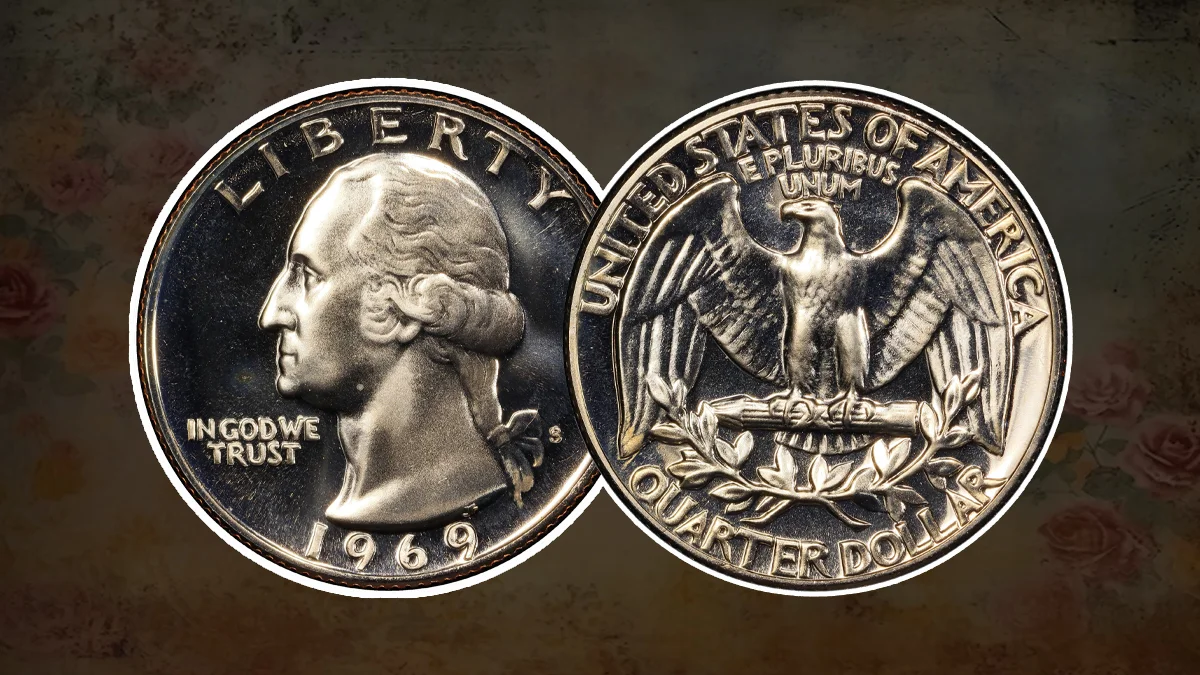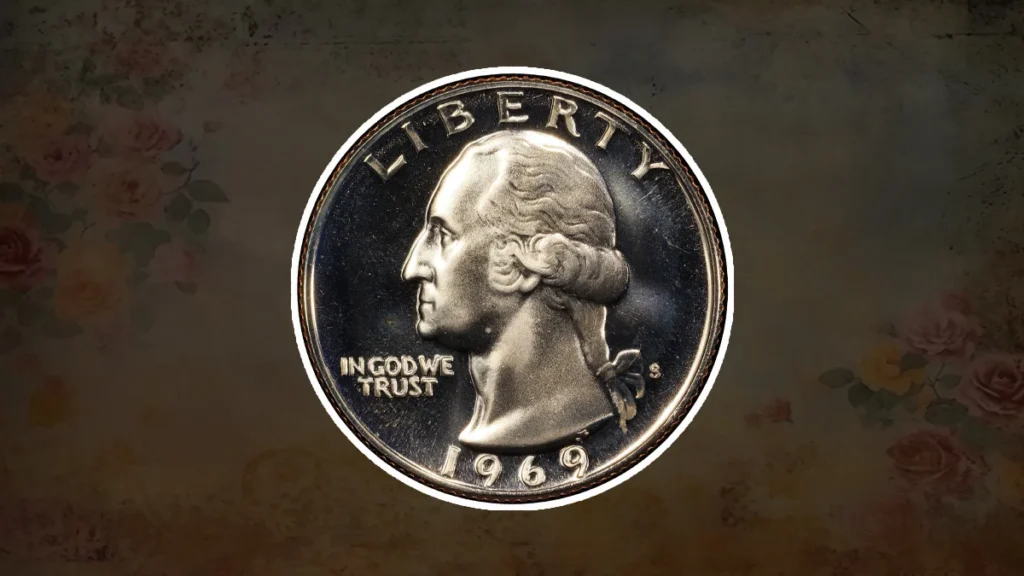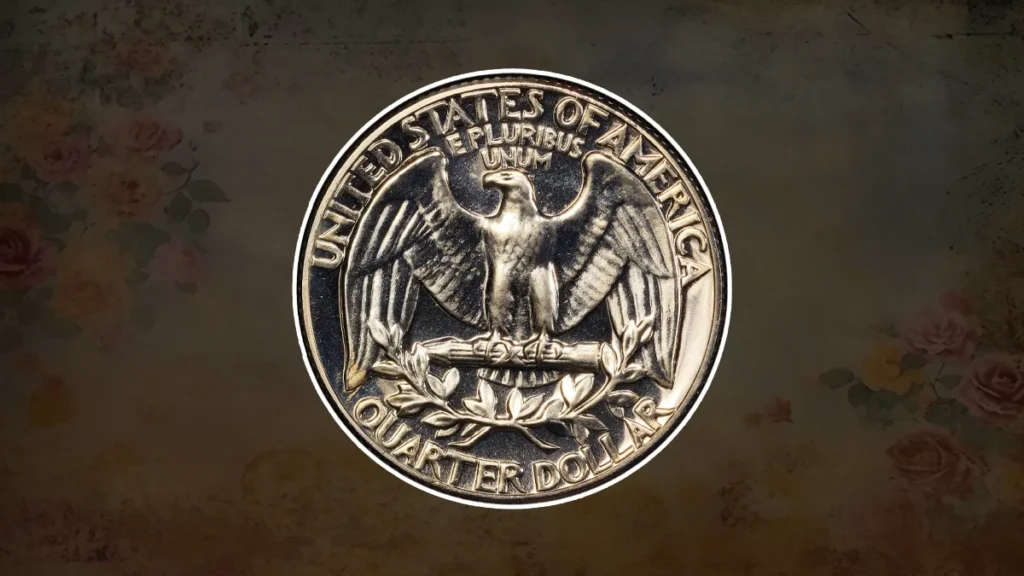
The fact that the 1969 Washington Modern Quarter was struck during a time when American currency was changing makes it a fascinating piece for collectors and enthusiasts. In 1969, Washington quarters were made by Philadelphia, Denver, and San Francisco mints in the United States. The San Francisco Mint made only proof quarters; the Philadelphia and Denver Mints produced coins for use in general circulation.
A 1969 quarter’s worth is mostly determined by its quality and the mint from which it came; proof and uncirculated coins can often be more valuable.
This article looks at the 1969 Washington quarter’s design, history, specifications, design, and value. We’ll look closely at the errors and variations that contribute to the rarity and value for specific of these coins.
History of the 1969 Washington Modern Quarter
The Washington Quarter first came in 1932 to celebrate the 200th anniversary of George Washington’s birth. Famous sculptor John Flanagan won the design competition with his simple yet elegant portrait of George Washington on the obverse and a heraldic eagle on the reverse.
Washington quarters were first made with 10% copper and 90% silver. This mixture was used until 1965 when increasing silver prices required a change to a composition containing cupronickel to discourage storage. The change was part of an overall effort to protect the country’s silver reserves.
The U.S. Mint had completely shifted to producing clad quarters by 1969. However, poor planchet quality, die wear, and imperfect establishment plagued the production process, leading to a large number of coins with errors or issues. Some of these error coins have become highly sought after by collectors today and are considered among the Most Valuable Modern Quarters. This year also marked the end of an unstable period when coin shortages brought on by hoarding of silver made it difficult for the mint to fulfill demand.
Specifications of the 1969 Washington Modern Quarter
- Composition: 91.67% copper, 8.33% nickel (cupronickel clad)
- Weight: 5.67 grams (0.2000034 ounces)
- Diameter: 24.30 mm (0.95669 inches)
- Thickness: 1.75 mm (0.069 inches)
- Edge: Reeded (119 reeds)
- Face Value: $0.25 (twenty-five cents)
Design of the 1969 Washington Modern Quarter
Obverse Design

The iconic bust of George Washington, facing left, is seen on the obverse of the 1969 Washington Quarter. From its introduction in 1932, John Flanagan’s design—which was influenced by the 1786 bust of Washington by French sculptor Jean-Antoine Houdon—has mostly looked the same. The motto “IN GOD WE TRUST” is inscribed to the left, while the word “LIBERTY” appears in Washington’s head. The year “1969” shows under Washington’s image. Washington’s initials, JF, are carefully positioned under Flanagan’s neck. For collectors, a coin value checker can be useful to determine the worth of this quarter.
Reverse Design

The coin’s reverse has a heraldic eagle with its wings spread, bringing a bundle of arrows in its talons as a sign of safety and power. Two olive branches under the arrows represent peace. The eagle’s head is tilted to the left, in the direction of the arrows, to represent how prepared the nation is for battle if needed. Printed around the top border of the coin is “UNITED STATES OF AMERICA,” with the Latin phrase “E PLURIBUS UNUM”—which means “Out of many, one”—between the eagle and the national motto. The words “QUARTER DOLLAR” have been written at the bottom of the reverse side.
Rarity and Condition of the 1969 Washington Modern Quarter
While the 1969 Washington quarter is not considered especially rare, the coin’s value can vary significantly depending on its condition and the mint from which it originated. Circulated examples are typically worth only their face value of 25 cents, but uncirculated specimens and proof coins can be much more valuable.
The mintage for 1969 Washington quarters is as follows:
- Philadelphia (No Mint Mark): 176,212,000 coins
- Denver (D): 114,372,000 coins
- San Francisco (S – Proof Only): 2,934,631 coins
1969 Washington Modern Quarter Errors and Varieties
Errors and varieties in the 1969 Washington Modern Quarter series can add substantial value to certain coins. Some of the most notable errors include:
- Doubled Die Obverse (DDO): This error occurs when the working dies is misaligned during the hubbing process, leading to a doubling of the design elements, most often seen in the lettering. A 1969 DDO quarter in PR 66 grade sold for $316 on eBay in 2020.
- Quarter Struck on a Penny Planchet: This error happens when a blank penny planchet (smaller than a quarter) is mistakenly fed into the quarter die press. As a result, portions of the design are missing, and the coin weighs only 3.11 grams instead of the standard 5.67 grams.
- Quarter Struck on a Nickel Planchet: Similar to the penny planchet error, this mistake occurs when a nickel planchet is used instead of a quarter planchet. The smaller size of the nickel planchet results in an incomplete design, and the coin weighs 5.0 grams, rather than the typical 5.67 grams.
- Mated Pair Error: A mated pair error occurs when two planchets are struck simultaneously, leading to one coin with only an obverse design and the other with only a reverse design.
- Repunched Mint Mark (RPM): This error occurs when the mint mark is punched into the die more than once, creating a shadow or doubled appearance. RPM errors are relatively rare and can command premium prices if in good condition. One example sold for $2,640 at auction in 2022.
Grading the 1969 Washington Modern Quarter
Grading a coin has to assess its condition based on factors like wear, luster, and the presence of contact marks or scratches. The 1969 Washington Modern Quarter is commonly graded on the following scale:
- Poor (P-1): Worn beyond recognition
- Fair (FR-2): Highly worn but still identifiable
- Good (G-4, G-6): Heavily worn, with major details visible
- Very Good (VG-8, VG-10): Well-worn, but more details are visible
- Fine (F-12, F-15): Moderate wear, with all major details visible
- Very Fine (VF-20, VF-30): Moderate to light wear, with sharp details
- Extremely Fine (EF-40): Minor wear, with strong details
- About Uncirculated (AU-50): Slight wear on the highest points
- Mint State (MS-60 to MS-70): No wear, with varying degrees of luster and strike quality
The highest possible grade, MS-70, is virtually flawless, but few 1969 Washington quarters achieve this rank.
Value of the 1969 Washington Modern Quarter
The value of a 1969 Washington Quarter is based on the mintmark, condition, and whether it has any errors or varieties. Here is some values:
1969 No Mint Mark (Philadelphia)
- MS 60 to MS 63: $1 to $1.20
- MS 64: $2 to $2.40
- MS 65: $9 to $10.80
- MS 66: $70 to $84
- MS 67: Up to $2,400 (record price: $3,290 in 2015)
1969 D (Denver)
- MS 60 to MS 62: $1 to $1.20
- MS 63 to MS 64: $2 to $2.40
- MS 65: $6 to $7.20
- MS 66: $10 to $12
- MS 67: $65 to $78
- MS 68: Up to $1,800 (record price: $3,819 in 2013)
1969 S (San Francisco – Proof)
- PR 67: $10
- PR 68: $12
- PR 69: $15
- 1969 S CAM Proof: $12 to $36
- 1969 S DCAM Proof: $42 to $300 (record price: $1,410 in 2013)
Also Read –
- 1968 Washington Modern Quarter: A Complete Guide
- 1967 Washington Modern Quarter: A Numismatic Rarity
- 1965 Washington Modern Quarter: A Guide for Coin Enthusiasts
- 1966 Washington Modern Quarter: A Complete Guide
Conclusion
The 1969 Washington Modern Quarter is an important coin for collectors because of its role in U.S. coinage history and the transition to a cupro nickel composition. Higher-grade uncirculated coins and proof versions can be quite expensive, while most circulated editions are only worth their face value. The attractiveness of this modern quarter is made even greater by errors and variations like doubled dies, misstruck planchets, and repunched mint markings. The 1969 Washington Quarter presents a unique combination of affordability and rarity for those looking to add a piece of American numismatic history to their collection.
